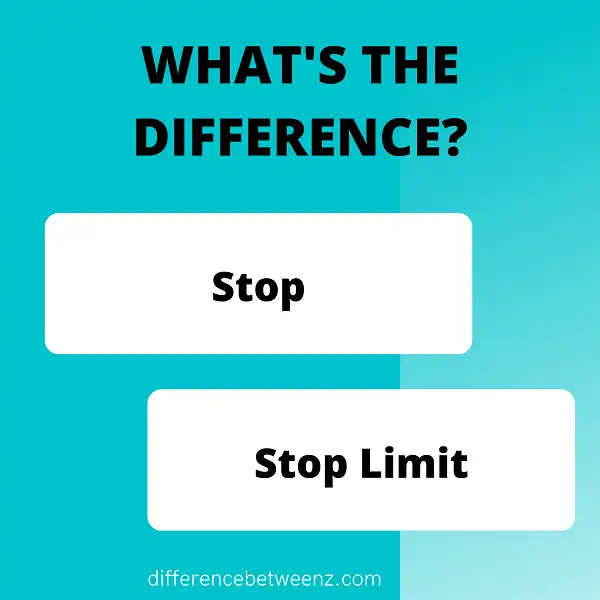When trading stocks or other securities, there are two main types of orders that can be placed: stop orders and stop limit orders. While they share a common goal – to help traders reduce their losses – there are some key differences between the two that should be understood before deciding which type of order to use in any given situation. In this post, we’ll take a closer look at those differences, and explain when it might make sense to use each type of order.
What is Stop?
Stop orders are one type of order that can be placed with a broker when buying or selling securities in the marketplace.
- Stop orders become executable only when the security’s price reaches or passes a designated stop price. At that time, a stop order becomes a market order. Stop prices can be set at a specific dollar amount above or below the current market price or at a percentage above or below the current market price.
- A buy stop order is placed above the current market price and is typically used by investors who believe the price of a security is about to move higher. Conversely, a sell-stop order is placed below the current market price and is typically used by investors who believe the price of a security is about to move lower.
- Stop orders are not guaranteed to be executed at or near the stop price and should only be used by investors who are willing to accept the risk that the order may be executed at a substantial difference from the stop price. Prior to placing a stop order, investors should consult with their broker to learn about all of the risks associated with this type of order.
What is Stop Limit?
Stop Limit orders are a type of stock order that combines features of both stop orders and limit orders.
- Stop Limit orders are placed with a Stop Price and a Limit Price. A Stop Price is a price at which a Stop Limit order becomes activated, and a Limit Price is a price at which the order will be filled.
- Stop Limit orders are only filled if the Stop Price is reached, and the Limit Price is at or below the Stop Price. If the stock price trades at or below the Stop Price, but the Limit Price is not reached, then the order will not be filled.
- Stop Limit orders are used to minimize loss and protect profits. They can also be used to enter into a position when away from the market.
Difference between Stop and Stop Limit
Stop and Stop Limit orders are very similar, but there is an important distinction between the two.
- A Stop order becomes a market order when the stock price reaches the Stop price, meaning that the order will be filled at the best available price.
- A Stop Limit order, on the other hand, becomes a limit order when the stock price reaches the Stop price.
- This means that the order will only be filled if the stock price does not exceed the Limit price.
- Stop Limit orders are often used to protect investors from sudden shifts in stock prices.
- By setting a Limit price, investors can ensure that they do not inadvertently sell their shares for less than they are willing to accept.
Conclusion
In short, a stop order is placed when you want to buy or sell shares of security once it reaches a certain price, while a stop limit order is placed when you want to buy or sell shares of a security at a specific price or better. Understanding the difference between these two orders can help you protect your investments and ensure that you always get the best possible deal.


